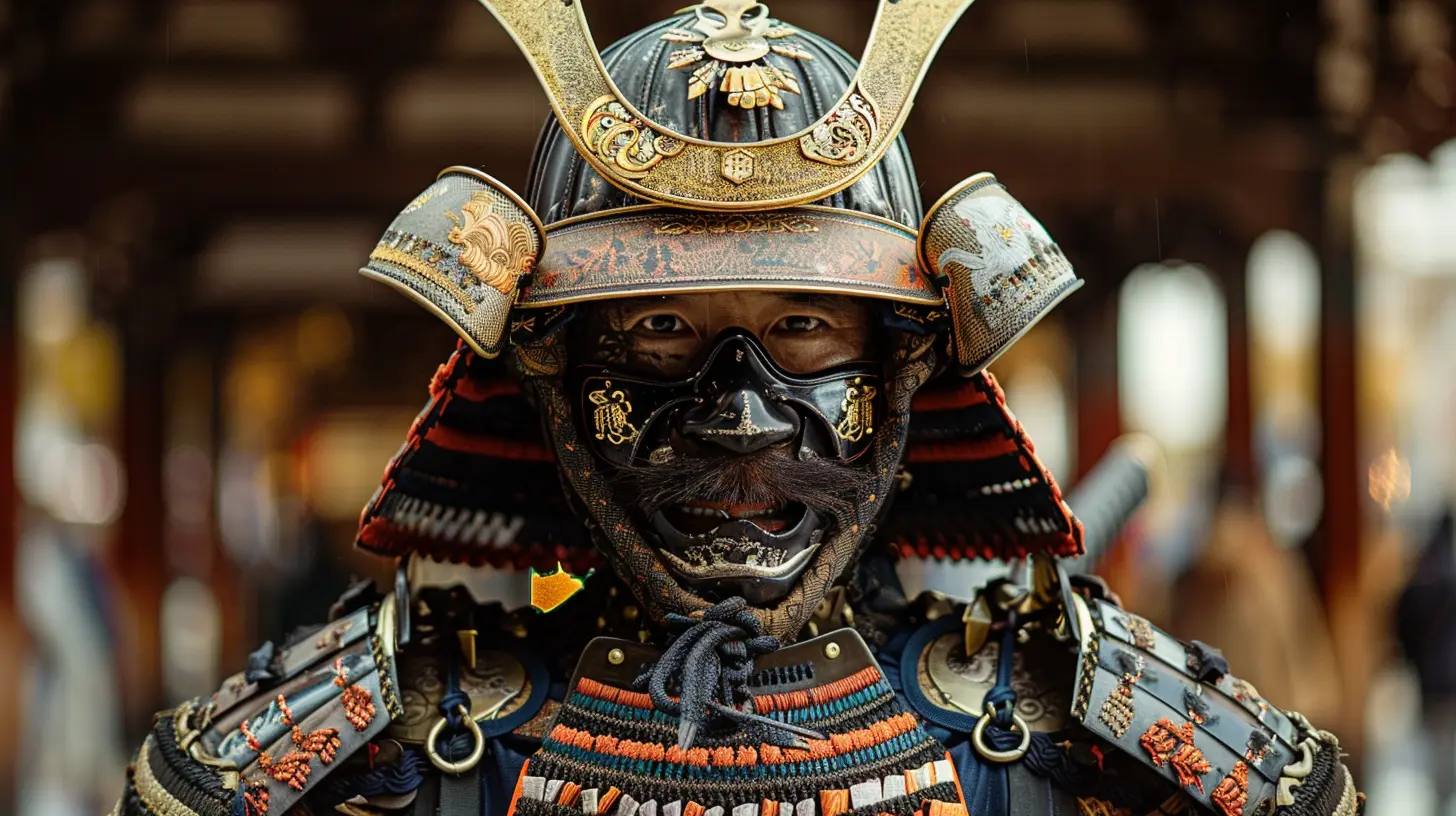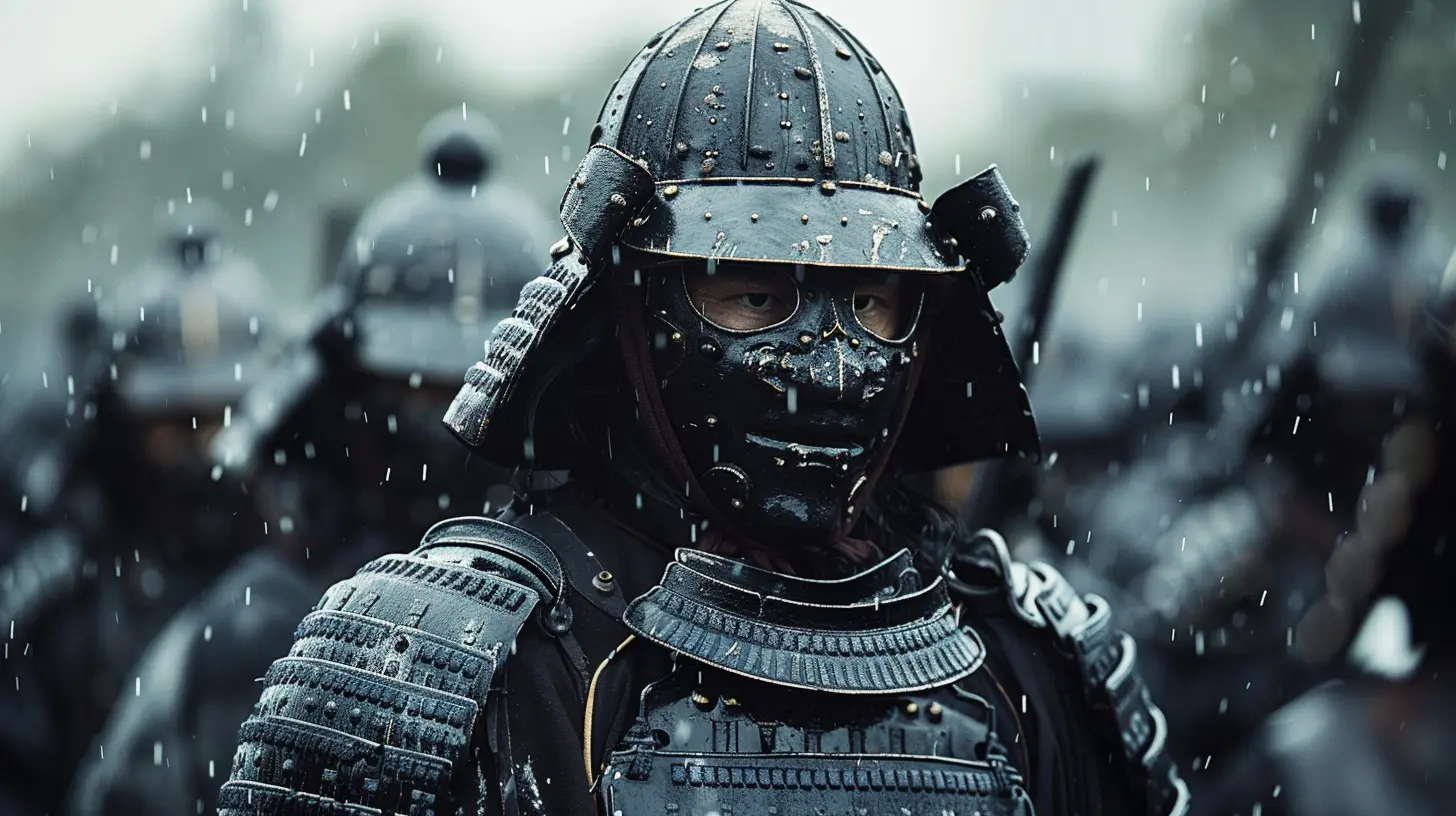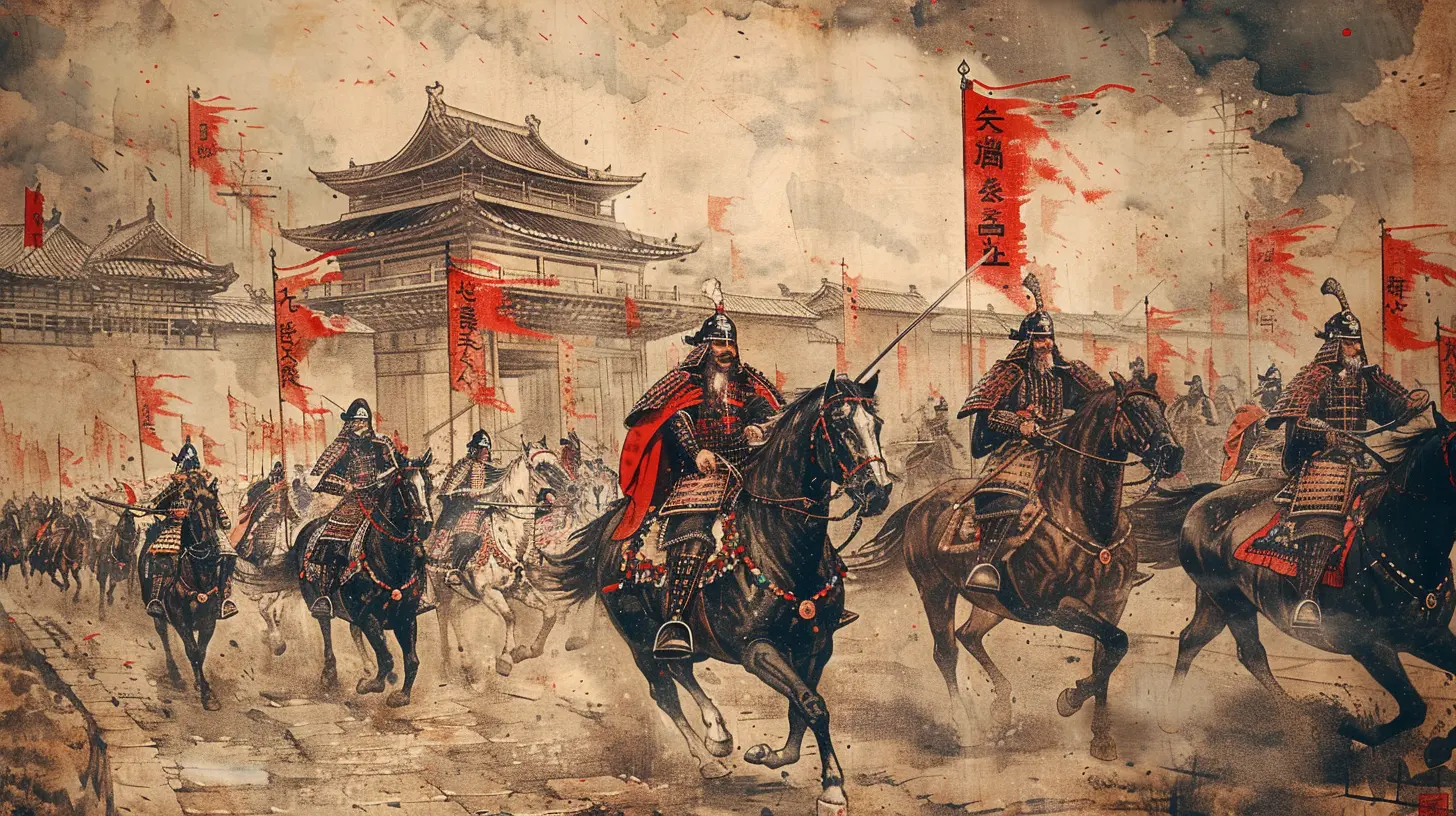The History of the Samurai in Feudal Japan
29 November 2024
The samurai—what an iconic symbol of Japan’s ancient past, right? These warriors have been romanticized in movies, books, and pop culture for years. You’ve probably seen them depicted in armor, wielding sharp katanas, and fighting with an almost poetic grace. But who exactly were these mysterious warriors, and how did they shape the history of Japan?
Let’s dive into the history of the samurai in feudal Japan, exploring their origins, their rise to power, their code of ethics, and ultimately, their decline. Buckle up—it's going to be quite the journey!

1. Who Were the Samurai?
The word "samurai" comes from the Japanese word saburau, which means "to serve." And that’s a pretty good starting point for understanding who these warriors were. The samurai were the military nobility of medieval and early-modern Japan, serving their lords, known as daimyos, with fierce loyalty and unmatched fighting skills.But they weren’t just about slicing through enemies with their katanas—they lived by a strict moral code called Bushido, which emphasized loyalty, honor, and personal discipline. Think of them as a mix between knights and monks, but with a lot more swordplay.
1.1 Origins of the Samurai
The samurai didn’t just pop out of nowhere. Their origins can be traced back to the Heian period (794-1185), a time when Japan was largely under the control of a powerful noble class. Back then, the imperial court in Kyoto held most of the power, while the country’s provinces were left to fend for themselves. As local landowners began to grow in power, they needed protection from bandits and rival clans. Enter the samurai.These early warriors were hired by landowners to protect their estates and settle local disputes. Over time, they began to gain political and military influence, and by the end of the Heian period, the samurai had become a distinct social class. They weren’t just mercenaries anymore—they were an integral part of Japan’s feudal system.

2. The Rise of the Samurai
The rise of the samurai truly began during the Kamakura period (1185–1333). This was when the first shogunate was established by Minamoto no Yoritomo, a samurai who took control after defeating the Taira clan in the Genpei War (1180–1185). The shogunate was essentially a military government, and the emperor became more of a figurehead while the shogun held real political power.This shift marked the beginning of what we call feudal Japan, where the country was ruled by a series of shoguns, and the samurai became the ruling military class. During this time, the samurai developed a unique culture and identity, one that revolved around their code of honor, Bushido.
2.1 Bushido: The Way of the Warrior
If you’ve ever heard of the term "Bushido," you know it’s often associated with the samurai. But what exactly was it?Bushido, or "the way of the warrior," was more than just a set of rules—it was a way of life. It emphasized virtues such as loyalty to one’s lord, self-discipline, courage, and honor above all else. A samurai was expected to live—and die—by these principles.
Honor, in particular, was a big deal. So much so that if a samurai failed their lord or acted dishonorably, they were often expected to commit seppuku (ritual suicide) to atone for their mistakes. Yeah, it was pretty hardcore.
But Bushido wasn’t just about death and honor—it also emphasized benevolence, fairness, and respect for others. So, while a samurai might have been a fearsome warrior, they were also expected to be just and compassionate leaders.

3. The Golden Age of the Samurai
The Muromachi period (1336–1573) and the Sengoku period (1467–1603) are often considered the golden age of the samurai. During these times, Japan was in a near-constant state of civil war, as various daimyos vied for power and territory. The samurai were at the center of all this chaos, fighting in countless battles and playing a crucial role in shaping the political landscape of Japan.One of the most famous and important battles of this period was the Battle of Sekigahara in 1600, which effectively ended the Sengoku period and paved the way for the Tokugawa shogunate.
3.1 The Tokugawa Shogunate
The Tokugawa shogunate (1603–1868) was a time of relative peace and stability in Japan, but it also marked the beginning of the decline of the samurai. With the country unified under a single shogun, there were fewer wars to fight, and many samurai found themselves without a purpose.Some samurai adapted to this new reality by becoming bureaucrats, scholars, or even artists, but many struggled to find their place in a rapidly changing society. Despite this, the samurai continued to hold an important place in Japanese culture and society, even as their military role diminished.

4. The Decline of the Samurai
As Japan entered the 19th century, the role of the samurai continued to decline. The country was beginning to open up to the rest of the world after centuries of isolation, and Western ideas and technologies were starting to take hold. The samurai, with their rigid adherence to tradition and their outdated mode of warfare, struggled to adapt.The final blow to the samurai came during the Meiji Restoration (1868), a period of rapid modernization and reform in Japan. The new government sought to abolish the feudal system and replace it with a modern, centralized state. This meant the end of the samurai as a distinct social class.
In 1876, the government passed a law that prohibited the carrying of swords in public, effectively stripping the samurai of their most visible symbol of power. Many former samurai either joined the military or found new careers in business or government, but their role in Japanese society would never be the same.
4.1 The Legacy of the Samurai
Even though the samurai as a social class no longer exist, their legacy lives on in many aspects of Japanese culture. Their code of honor, Bushido, has had a lasting influence on Japanese values, particularly in terms of loyalty, respect, and self-discipline.You can also see the influence of the samurai in Japan’s martial arts traditions, such as kendo and judo, which emphasize both physical and mental discipline. And, of course, the image of the samurai continues to captivate people around the world, from Kurosawa films to anime and video games.
5. Samurai in Popular Culture
It’s hard to talk about the samurai without mentioning their huge impact on popular culture. From classic films like Seven Samurai to modern-day anime like Rurouni Kenshin, the samurai have become a symbol of honor, bravery, and a bygone era.But keep in mind, the samurai we see in movies and TV shows are often idealized versions of the real thing. The real samurai were complex individuals, shaped by the social and political forces of their time. They weren’t always perfect or noble, but their influence on Japanese history and culture is undeniable.
6. Conclusion: The Samurai’s Lasting Impact
The history of the samurai is one of loyalty, honor, and adaptability. From their humble beginnings as provincial warriors protecting their lords’ lands to their rise as the ruling military class of Japan, the samurai played a crucial role in shaping the history of feudal Japan.Even after their decline during the Meiji Restoration, the legacy of the samurai remains alive and well, not just in Japan but across the globe. Their code of honor, their dedication to their craft, and their sense of duty continue to inspire people to this day.
So, the next time you see a movie or read a book about the samurai, remember that behind the legends and the myths, there’s a rich and complex history waiting to be explored.
all images in this post were generated using AI tools
Category:
History LessonsAuthor:

Zoe McKay
Discussion
rate this article
19 comments
Zeno McDonald
This article offers a concise yet insightful overview of the samurai’s evolution in feudal Japan. It effectively highlights their cultural significance, military prowess, and the complex social dynamics of the period, making it a valuable read for enthusiasts and scholars alike.
January 30, 2025 at 4:13 AM

Zoe McKay
Thank you for your thoughtful feedback! I'm glad you found the article insightful and valuable.
Paula McTigue
This article provides an insightful overview of the samurai's evolution in feudal Japan, highlighting their roles as warriors, administrators, and cultural icons. It effectively explores the complex relationship between samurai and society, showcasing their impact on Japanese history and the enduring legacy of bushido. A must-read!
January 26, 2025 at 1:29 PM

Zoe McKay
Thank you for the thoughtful comment! I'm glad you found the article insightful and engaging.
Trevor McWhorter
Fascinating glimpse into a noble warrior's past!
January 23, 2025 at 1:25 PM

Zoe McKay
Thank you! I'm glad you found it intriguing. The samurai's history is indeed rich and complex!
Siena McCaffrey
Ah yes, because who doesn’t love a good warrior drama, right?
January 21, 2025 at 3:19 AM

Zoe McKay
Absolutely! The samurai's complex history is filled with both drama and honor.
Haven Carter
Exploring the rich history of the samurai illuminates the power of resilience, honor, and dedication. Their journey inspires us to embrace our own challenges, reminding us that greatness often arises from discipline and the unwavering pursuit of our ideals. Keep learning!
January 18, 2025 at 4:36 AM

Zoe McKay
Thank you for your insightful comment! The samurai's legacy indeed inspires us to embody resilience and honor in our own lives.
Briar McKinley
What a fantastic and insightful exploration of the samurai's rich history! Your detailed analysis truly captures the essence of their influence in feudal Japan. It’s inspiring to see how their values of honor and discipline continue to resonate today. Thank you for sharing this enlightening journey through time!
January 16, 2025 at 1:59 PM

Zoe McKay
Thank you for your kind words! I'm glad you found the exploration insightful and inspiring.
Zaid Hahn
Unearth the shadows of honor and conflict as we journey through the enigmatic past of the samurai. What secrets lie hidden in their unwavering code of loyalty and sacrifice?
January 11, 2025 at 5:22 AM

Zoe McKay
Thank you for your insightful comment! The samurai's rich history is indeed a tapestry of honor, loyalty, and sacrifice, revealing profound lessons that continue to resonate today.
Thalyn Bowers
Discover the unwavering spirit of the samurai—a testament to honor, discipline, and resilience. Their legacy inspires us to embrace our values and face challenges with courage!
January 5, 2025 at 10:04 PM

Zoe McKay
Thank you for your insightful comment! The samurai's enduring legacy indeed embodies the values of honor and resilience, serving as a powerful inspiration for us all.
Shelby Benton
In shadows of ancient honor, the samurai's tale unfolds, Warriors bound by code, fierce yet noble, Their spirit whispers through time, A legacy of bravery etched in the heart of Japan.
December 30, 2024 at 12:24 PM

Zoe McKay
Thank you for capturing the essence of the samurai's legacy! Your poetic reflection beautifully highlights their enduring honor and spirit in Japanese history.
Dax Whitaker
Exploring the samurai's evolution from noble warriors to cultural icons reveals more than just swordplay; it unearths a complex tapestry of honor, loyalty, and the relentless pursuit of balance in a tumultuous feudal landscape. Truly captivating!
December 27, 2024 at 7:47 PM

Zoe McKay
Thank you! I'm glad you found the exploration of the samurai's evolution and their deeper values captivating. Their history is indeed complex and rich.
Craig Foster
Hidden in the shadows of feudal Japan, the samurai's code whispers secrets of honor and betrayal. What untold stories lie beneath their armor, waiting to be uncovered in the echoes of history?
December 25, 2024 at 1:28 PM

Zoe McKay
Thank you for your thought-provoking comment! Indeed, the samurai's journey is rich with layered narratives, blending honor and betrayal, and much more remains to be explored.
Jace McKinney
This article offers a concise overview of the samurai's evolution, highlighting their cultural significance and military prowess in feudal Japan. A valuable resource for anyone interested in the intersection of history, honor, and warfare.
December 18, 2024 at 9:12 PM

Zoe McKay
Thank you for your thoughtful comment! I'm glad you found the article valuable in exploring the samurai's rich history and significance.
Sylvia Estes
This article offers a compelling overview of the samurai's evolution in feudal Japan. By exploring their origins, cultural significance, and influence on contemporary society, it highlights how the samurai embody the complex interplay of honor, duty, and martial prowess in Japanese history. Excellent read!
December 15, 2024 at 4:34 AM

Zoe McKay
Thank you for your kind words! I'm glad you found the article insightful.
Josie Spencer
Discover the valor and discipline of samurai—an enduring legacy that shapes modern values and honor!
December 12, 2024 at 9:26 PM

Zoe McKay
Thank you! The samurai's legacy indeed continues to influence modern values, reflecting the timeless principles of honor and discipline.
Kirk Allen
Beyond their swords and honor lies a world shrouded in secrets. What hidden truths do the samurai's shadows whisper about the soul of feudal Japan?
December 11, 2024 at 5:17 AM

Zoe McKay
The samurai's shadows reveal a complex interplay of loyalty, duty, and the burdens of honor, reflecting the deep societal values and struggles of feudal Japan. Their hidden truths speak to the sacrifices made in the name of bushido, the way of the warrior, and the often unseen moral dilemmas they faced in a world rife with conflict and intrigue.
Damon Sanders
This article provides a fascinating glimpse into the complex lives of samurai, highlighting their cultural significance and martial prowess in feudal Japan.
December 4, 2024 at 5:54 AM

Zoe McKay
Thank you for your thoughtful comment! I'm glad you found the article insightful and engaging.
Juliet Chapman
This article effectively highlights the samurai's complex role in feudal Japan, blending history with cultural significance in a concise manner.
December 1, 2024 at 1:31 PM

Zoe McKay
Thank you for your feedback! I'm glad you found the article insightful and well-balanced.
Fatima McQuaid
Insightful overview of samurai culture and legacy.
November 29, 2024 at 8:52 PM

Zoe McKay
Thank you! I'm glad you found the overview insightful. The samurai's legacy is indeed fascinating and complex.
Astralis Rivera
What an enlightening journey through the fascinating world of the samurai! This article beautifully captures their rich history and unwavering spirit. Learning about their values and traditions adds a vibrant layer to our understanding of feudal Japan. Cheers to exploring such an incredible legacy filled with honor and bravery! 🌸🏯✨
November 29, 2024 at 4:32 AM

Zoe McKay
Thank you for your thoughtful comment! I'm glad you enjoyed the journey into the rich history and values of the samurai. Their legacy truly is one of honor and bravery! 🌸🏯✨
MORE POSTS

Adapting to Different Learning Styles in Online Courses

How to Stay Engaged in Virtual Classrooms

Peer Tutoring Techniques for Effective Learning

How the Spanish Inquisition Shaped European History

How to Challenge Gifted Students Without Overwhelming Them

How to Access Free Online Learning Resources

Servant Leadership in Education: Putting People First

Building a Growth Mindset with Formative Feedback

Formative Assessment for Social-Emotional Learning: A Holistic Approach

How to Develop a Growth Mindset in Online Education

Peer Tutoring and Its Role in Promoting Equity in Education

The Importance of Social-Emotional Learning in Health Education